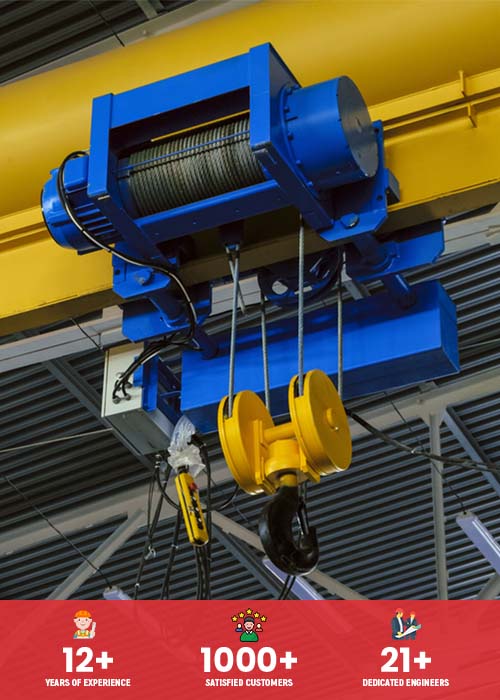Types of Overhead Cranes
This section specifies the kind of equipment you require. Overhead cranes come in four basic configurations:
- Top Running (T/R) – The crane bridge travels on top of rails mounted on a runway beam supported by either the building columns or columns specifically engineered for the crane.
- Under Running (U/R) – The crane bridge travels on the bottom flange of the runway beam which is usually supported by the roof structure.
- Single Girder (S/G) – The crane consists of two end trucks, a single bridge girder and the trolley hoist unit. The trolley runs on the bottom flange of the bridge girder.
- Double Girder (D/G) – The crane consists of two end trucks, two bridge girders and the trolley hoist unit. The trolley runs on rails on top of the bridge girders.
A variation on these types of overhead crane is Gantry Cranes. These cranes are essentially the same as the regular overhead cranes; however, the bridge girder(s) are connected to “legs” on either side of the span. These “legs” eliminate the supporting runway and column system and connect to end trucks which run on a rail either embedded in, or laid on top of, the floor.

For some applications only a Trolley Hoist is required. For instance, in the case of a monorail system a Trolley Hoist unit similar to the one used on single girder cranes is mounted on a beam which might be used to service an assembly line within the client’s facility. Other clients may have an existing single or double girder bridge crane and may just want to replace the hoisting unit. In most of these situations, capacity permitting, we can provide either a Wire Rope or Chain Hoist.
Another solution which may fit your needs is a Jib Crane. A Jib Crane basically consists of a boom which is supported as a cantilever on a column. A Trolley Hoist travels along the boom which can rotate up to 360 Degrees.


